04. Animals - Common Insects
 Self Study
Self Study
Prepared by: learnloophq@gmail.com
Last edited 37 days ago by Learn LoopHQ.
Chapter: 04. Animals Common Insects
Animals: Common Insects
Welcome, young scientists! Get ready to explore the fascinating world of insects, those tiny creatures that are all around us. In this self-study adventure, you’ll learn all about common insects, their amazing body parts, how a butterfly grows from an egg, what makes some insects “social,” and how to protect yourself from the ones that can cause harm. Let’s dive in!
What Are Insects?
Insects are small creatures that you can find almost everywhere – in your home, garden, and even by the roadside! They come in many different colors and sizes. Most insects have wings that help them fly, but some, like ants and bedbugs, cannot fly.
Here are some common insects you might have seen:



Body Parts of an Insect
Every adult insect has six legs. Imagine an insect’s body like a building with three main floors! These three main parts are:
Insects also have a pair of antennae on their head. Think of these as their super-sensors! They help insects to sense and feel things in their surroundings, like finding food or avoiding danger.
Did you know insects don’t have bones inside their bodies like we do? Instead, they have a hard outer covering. This hard shell is made up of a material called chitin. It acts like an armor, protecting their soft bodies inside.
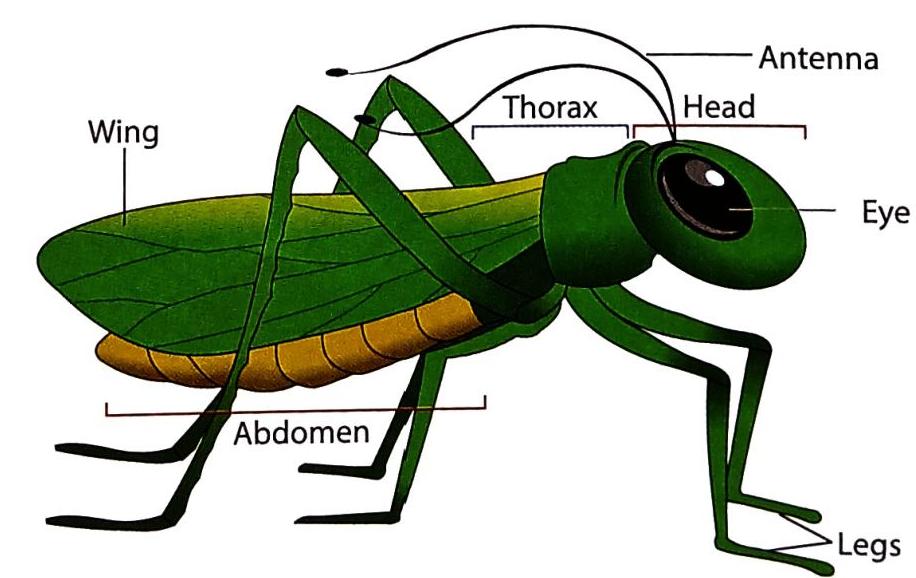


Life Cycle of a Butterfly
All insects start their lives as eggs. These eggs don’t just magically become adult insects! They go through several fascinating stages of development. This series of stages, from an egg to an adult, is called the life cycle of an organism.
Let’s look at the amazing life cycle of a butterfly:
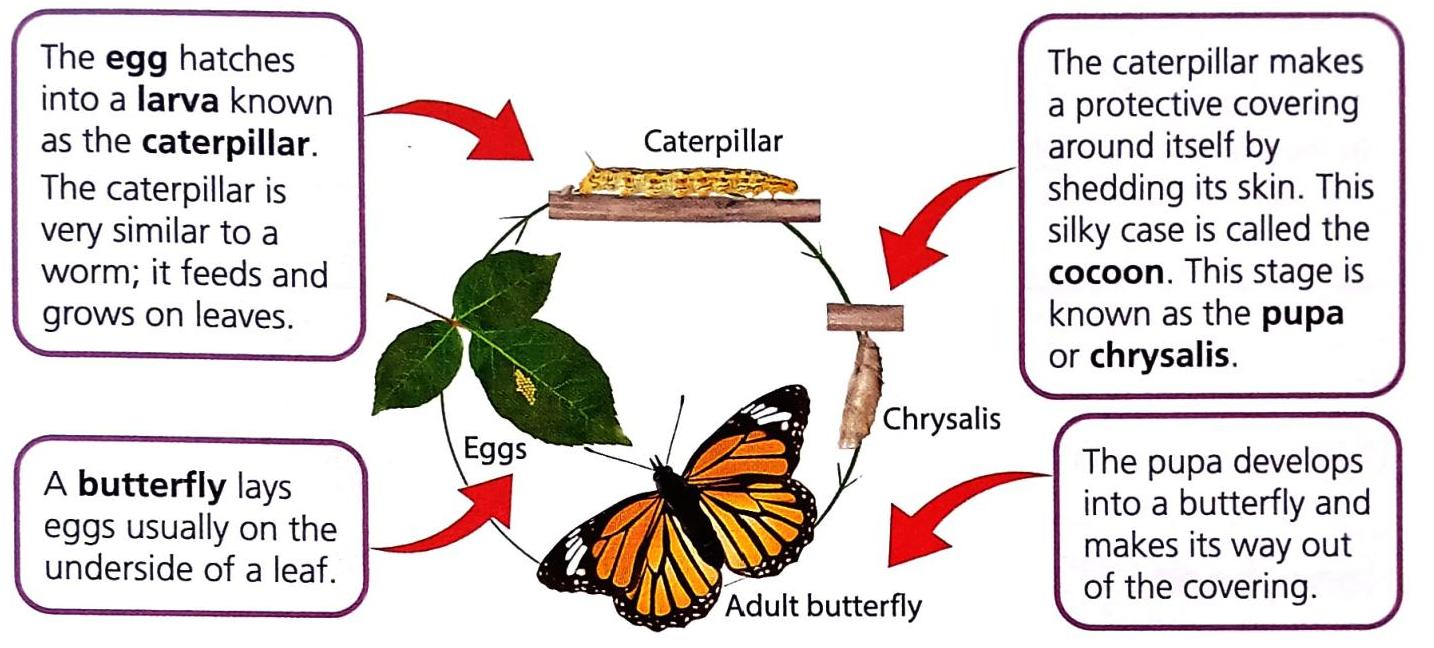


Social Insects
Some insects are not loners; they love to live and work together in large groups called colonies. These insects are known as social insects. Wasps, ants, and honeybees are great examples of social insects. They work together, sharing tasks to help their entire colony thrive.
Ants
Ants are amazing social insects that come in various sizes. In an ant colony, there are three main types of ants:
Ants are excellent team players. When an ant discovers food, it leaves a trail of scent. This scent acts like a map, guiding other ants from the colony straight to the food source! This teamwork makes ants very successful at solving problems, like finding enough food for everyone.
You can find ants almost anywhere: in your homes (especially kitchens!), gardens, and along roadsides. They love sweets, bread, and various cooked and uncooked foods. This is why if you spill sugar on the floor, you might soon see a crowd of ants coming to enjoy the feast!
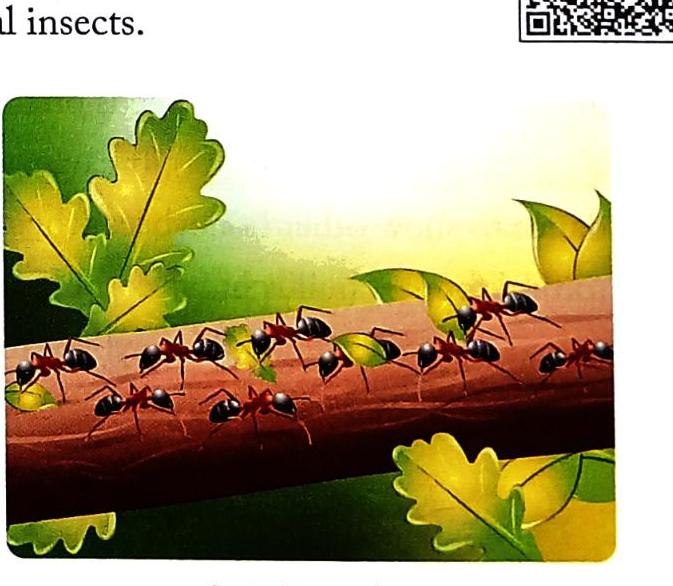


Honeybees
Honeybees are another famous example of social insects that live in very large colonies. Just like ants, different bees in the colony have specific tasks:
Honeybees love to spend their time in gardens and orchards because that’s where they find flowers. They feed on nectar (a sweet liquid) and pollen from flowers. When a honeybee finds a good source of food, it can even dance to tell other honeybees where to find it!
Honeybees build special nests called honeycombs, which are usually inside a beehive. They use these honeycombs to store the delicious honey they make. Honey is not just for us; it’s also how honeybees survive cold winters! They eat their stored honey and huddle together with other bees to keep warm.
Fun Fact: Honeybee Farming (Beekeeping)
Did you know that humans practice honeybee farming, also known as beekeeping? This is done to collect honey and beeswax, which are both very useful to us!
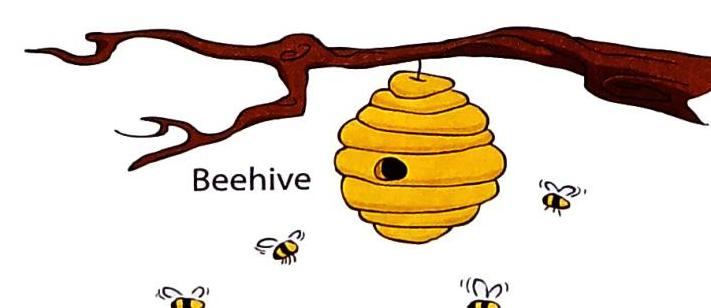


Some Harmful Insects
While some insects are incredibly useful to us (like honeybees for honey and silkworms for silk – the cultivation of silkworms for silk is called silk farming or sericulture), many others can cause harm.
Here are some common harmful insects and the problems they cause:
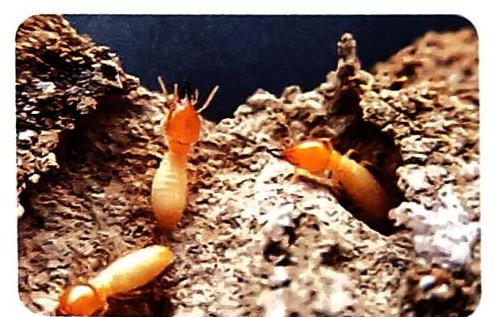
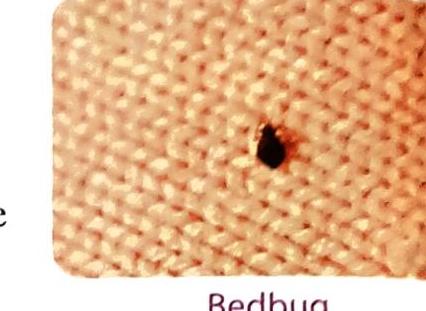
Protecting Ourselves from Harmful Insects
It’s important to take steps to protect ourselves and our homes from these harmful insects. Here are some effective ways:
Remedies for Insect Bites and Stings
If you do get a mild insect bite or sting, here are some things you can do for immediate relief:

First Aid: Remember, first aid is the immediate help given to an injured person before any proper medical help arrives.
Helpful Tip for Ants:
Do you have an ant problem at home? Try spraying some white vinegar in the areas where you often see ants. They don’t like the smell!
Why Calamine Lotion?
Some people suggest applying calamine lotion on an insect bite because it helps to soothe the itchy skin and reduce redness and irritation.

Chapter Summary
Let’s quickly review everything we’ve learned about common insects!
Want to print your doc?
This is not the way.
This is not the way.

Try clicking the ⋯ next to your doc name or using a keyboard shortcut (
CtrlP
) instead.